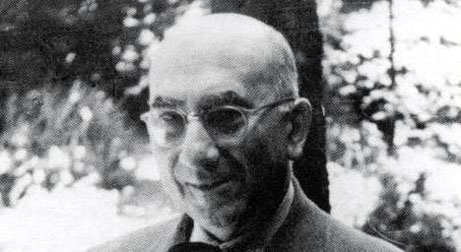Governance
Nino Barbantini
PRESIDENT OF THE FOUNDATION FROM 1951 TO 1952
Eugenio (Nino) Barbantini was born in Ferrara on 5 July 1884. He graduated in law, but his interest in art prevailed.
From 1907 he served as Secretary of ‘Permanent Exposition of Venetian Arts and Industries’. He then moved to Venice and took up residence at Ca’ Pesaro, where he launched, under his own direction, the ‘Bevilacqua La Masa’ exhibitions for young artists. The first exhibition opened on 26 July 1908 and included the participation of the older, more established Venetian painters.
From then until 1913 around ten exhibitions on artists and craftsmen (particularly glass) were held. The participation of artists such as Arturo Martini, Umberto Moggioli, Felice Casorati and Gino Rossi made the effort unique in Italy and of great impact in the birth of 20th-century Italian art.
During war of 1915-18 Barbartini served as a volunteer Alpine official. When he returned to Venice in late 1918, he resumed his work at Ca’ Pesaro.
From 1922 on he dedicated himself to studying 19th-century painting, particularly of the Veneto. In 1923 he organised the large exhibition at Ca’ Pesaro on 19th- century Venetian portraits. The exhibition catalogue, which he edited, made a substantial contribution to the re-evaluation of 19th-century Italian painting.
In 1925 Barbartini was nominated Vice President of the Ateneo Veneto, an office he filled until 1929 and again from 1947 to 1950. In 1926, on behalf of the Biennale, he organised the first large Italian retrospective of Giovanni Segantini, which cemented the artist’s international fame.
In 1929 he organised another large exhibition at the Giardini of the Biennale on Italy in the 18th century, tracing a spectacular itinerary of the 18th century that included the ‘applied arts’ (furnishings, glass, ceramics, work in silver).
In 1933 Barbantini organised one of the century’s most important exhibitions: Ferrarese Painting of the Renaissance, held at Ferrara’s Palazzo dei Diamanti. It was around this time that he befriended and began to collaborate with Vittorio Cini, who entrusted him with overseeing the restoration and furnishing of the Castle at Monselice, a task that would take a few years and would culminate in the monograph published in 1940.
Among the other exhibitions organised by Barbantini are the shows dedicated to Titian in 1935 (which became emblematic of the ‘large exhibition’) and to Tintoretto in 1937 (in collaboration with Rodolfo Pallucchini). He also laid out, in 1936, in collaboration with Giulio Lorenzetti, the museum at Ca’ Rezzonico on 18th-century Venice.
In 1948 he curated the retropective exhibitions of Gino Rossi and Cagnaccio di San Pietro at the Biennale. He also organised two historical exhibitions for the ‘Bevilacqua La Masa’ Foundation on the early years of Ca’ Pesaro, evidencing its role in the birth of modern Italian art.
On 9 June 1952 the ‘Assemby of the European Society of Culture opened at Palazzo Ducale. Conferences participants were invited to the Cini Foundation, where ‘President Barbantini illustrated the imposing restoration project underway’.
Barbantini died on 17 December 1952. He is buried in Certosa di Ferrara.

Nino Barbantini.